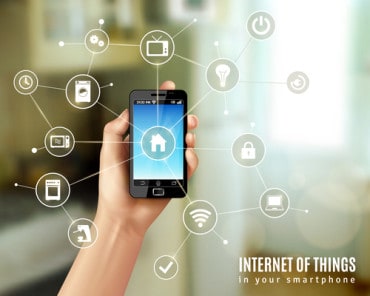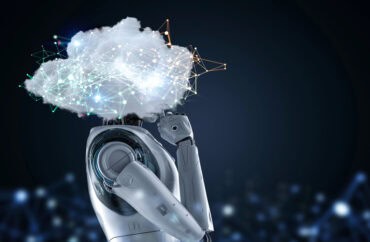
A new era of technological integration sees the retail industry get smart with AIoT and an event-driven mindset.
The retail sector has not been immune to the proliferation of IoT-enabled devices and sensors throughout stores, customer service channels, warehousing, and the supply chain. Now, retailers are layering on Artificial Intelligence to better leverage this data.
As such, the artificial intelligence of things (AIoT) is emerging as pivotal for retailers. Why? Combining AI with data from IoT devices helps retailers reimagine the in-store experience, enhance service delivery, and maintain product visibility at every operational level.
In the Global Data IoT in Retail and Apparel thematic report, the growing integration of AI into IoT products and services in retail is inevitable and already happening: “The key layers in the IoT value chain are physical, connectivity, data, apps, and services. While these layers are logically discrete, large-scale IoT solutions are seeing considerable blurring of these logical boundaries.
For example, while there will continue to be a clearly identifiable data layer towards the top of the stack, a growing proportion of the data processing occurs within and at the edge of the network. The accelerated development of generative AI, particularly ChatGPT, has increased the relevance of AI across all IoT layers. Therefore, a growing number of IoT products and services incorporate AI into their capabilities, especially across customer-driven interfaces.
Event selection produces real-time results and solutions
Fine-grained routing via event streaming allows systems to be more selective in what is analyzed by AI so that it can be both cheaper and more reactive to events. An event represents a change in state, or an update, such as an item being placed in a shopping cart, a loyalty card application being submitted, or an order becoming ready to ship.
Events are “published” with a topic that indicates what they are about, and systems can “subscribe” to receive all events with relevant topics. AI systems receive events to produce real-time results that allow for real-time solutions/actions to be automatically triggered, but this data feed also provides a stream for constant learning, either by ingestion into a vector database or by fine-tuning the model itself.
Win over stakeholders with intelligent use cases
A lot of early applications of AI in retail will likely focus on generative AI (Gen-AI) and Large Language Models (LLMs). These can be used for direct customer interactions through store apps, omnichannel customer service interactions, and even to aid workers in the warehouse.
But one of the biggest issues with today’s LLM-based AI is that it is relatively expensive and slow. Simply fire-hosing IoT data to an LLM for processing will quickly become unwieldy and very expensive. The biggest benefits from the convergence of AI and IoT in retail will be realized by retail organizations identifying intelligent use cases to deliver benefits to customers, staff members, and the business as a whole.
… and let the benefits speak for themselves
Event-enabling IoT streams can provide benefits to retail customers and employees in-store, via customer service channels, and even in warehousing.
Here are three use cases where the convergence of AI and IoT in retail, underpinned by event streaming, can make a real difference.
1) Introducing the connected factory worker
Starting in the warehouse, AI can aid in exception handling for factory workers. Most retailers are now using some kind of mobile or tablet device in warehousing operations, and these are supported by IoT devices on the floor for stock monitoring and other inventory-related tasks.
These all provide a wealth of potential benefits from which AI can glean new insights and address potential issues. For example, a Gen-AI solution could provide all workers with an extremely easy way of reporting issues, incidents/near misses, or thoughts for efficiency. This is qualitative information, but an LLM-based AI can then review, sort, group, and provide curated advice to management.
Emergency response in real time to keep operations safe
In an emergency situation, for example, there is also the potential to greatly increase the speed at which organizations can respond in real-time in the warehouse or factory floor. Having an event-driven system to deliver the information and AI to transcribe it, look at it, and then put it in front of the relevant person as soon as possible could improve safety, time, and money on the factory floor.
Here, the event mesh can link many AI agents, each tailored to a specific set of events. This can be as straightforward as subscribing to all events that contain raw audio and using a speech-to-text model to create the transcription, which is then published back into the mesh. All of these components communicate asynchronously via the event mesh using guaranteed messaging to ensure that no events can be lost in transit and they are delivered to the appropriate person or device to trigger an emergency response.
2) Better understand customer preferences to customize the shopping experience
AIoT enables retailers to intelligently take advantage of in-store and customer data to offer highly customized shopping experiences. By using AI to analyze customer data from IoT devices, retailers can tailor product recommendations, offers, and even in-store experiences to individual preferences. Take the instance of providing an in-store customer service assistant who knows where the customer is and, more importantly, where everything else is located.
For example, a customer could tell the store app that they’re looking to build a fence. They no longer have to wait for the hardware store representative to advise them on where the product they need is and which they should use. Instead, an AI assistant would use store-specific information to provide a response tailored to each customer’s needs. It would go to its databases, answer the query intelligently, and say, OK, now that we’ve figured out the kind of materials you need, let’s walk around the store and find them.
Maximizing front-end customer experience requires back-end data movement
Being able to action these requests quickly, accurately, and effectively means event enabling all stock information and AI processing. Customers need to know in real-time if the materials they require are available, and this would also require the contextual use of sensors in-store to direct them to the area of the store to find their goods.
An event-driven approach to integrate both this device data and AI processing would use an event mesh – a network of interconnected event brokers that enables the distribution of events information among applications, cloud services, and devices – to enable real-time processing and predictive insights. Once purchased, events could also include back-end documentation and instructions that explain to the customer how to build their required project when they get home.
3) A trusty Copilot agent emerges in the contact center
Modern customer contact centers now come with an AI copilot designed for better customer service. Microsoft Copilot, for example, is now inherent with Microsoft 365 and extends existing contact center channels with generative AI to enhance service experiences and boost agent productivity.
AI can help with processing recorded or real-time calls to customer service to highlight any serious issues that need emergency assistance. Note that this isn’t the AI taking the place of the customer support person but reacting to issues that have come up in a human-to-human call to provide real-time context about the customer and the problem that they are having.
Event-enabled AI to further add context for customer service reps
By event-enabling this AI copilot and tying it in with the numerous data points across the customer service process (CRM data for customer history, type of device/channel they are communicating from, customer service scripts/protocols, and BI reporting), organizations can deliver new levels of real-time insights to the customer service rep.
AI agents can subscribe to a narrow set of events, provide a prompt template specific to that subscription, and then use an LLM to enhance the event with additional information. For example, performing sentiment analysis on user interactions to identify customers with issues that need routing to an expert, a customer ripe for an upsell, or synthesizing new events based on the combination of accumulated data.
Connected commerce creates a smarter retail future
The combination of AI and IoT in the retail industry represents a transformative shift in how retailers can leverage the technology and data at their disposal. An event-driven strategy is a critical component in this process and will help retail organizations enhance customer experiences, streamline operations, and empower employees from the factory floor to the in-store and the contact center.





























